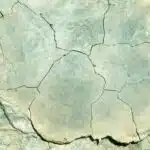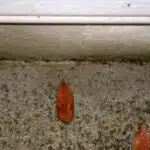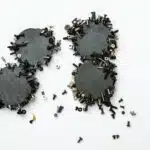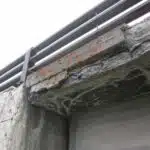Wood siding is a popular choice for homeowners due to its aesthetic appeal and durability. However, over time, the natural wear and tear of weather conditions and age can cause damage to the wood siding. It is important to repair any damaged areas as soon as possible to prevent further damage and maintain the integrity of the siding. In this article, we will discuss how to repair wood siding, including identifying types of damage, tools needed for repair, and step-by-step instructions for repairing common types of damage.
Repairing wood siding requires some basic knowledge and skills, but it can be done by almost anyone with a little bit of patience and attention to detail. By learning how to properly identify different types of wood siding damage and using appropriate tools and techniques for repairs, homeowners can save money on costly professional repairs or replacements. Additionally, taking care of small repairs promptly can prevent more significant damage from occurring in the future. With our helpful tips and detailed instructions, you’ll be well on your way to repairing your wood siding like a pro!
Understanding The Types Of Damage To Wood Siding
Wood siding is a beautiful and timeless choice for the exterior of your home. It provides natural warmth and texture that can’t be matched by other materials. However, like anything else, wood siding is not indestructible and can suffer from various types of damage. Identifying common problems is the first step in repairing wood siding. The most common issues are cracking, rotting, warping, and insect infestation.
Cracking happens when the wood dries out and loses moisture. This often occurs in hot weather or in areas with low humidity levels. Rotting occurs when water seeps into the wood and causes it to decay. Warping is another issue caused by moisture exposure. Finally, insects such as termites or carpenter ants can bore into the wood, causing structural damage over time.
Tips for preventing damage include regular inspection of your siding for any signs of wear or damage. Clean your siding annually to remove dirt and debris that may cause moisture buildup or attract insects. Additionally, keep trees trimmed back away from your home to prevent branches from rubbing against your siding.
Now that you’ve identified common issues with wood siding and learned how to prevent them, let’s move on to discussing the tools needed for repairing damaged areas of your siding.
Tools Needed For Repairing Wood Siding
Understanding the Types of Damage to Wood Siding is essential before starting any wood siding maintenance work. Once you have identified the damage, it’s time to proceed with the repair process. To ensure that your wood siding looks as good as new, you’ll need to have the right tools at your disposal.
Before getting started, make sure you have all of the essential tools needed for repairing wood siding. These tools include a pry bar or claw hammer, a circular saw or handsaw, a caulking gun and sealant, a putty knife, sandpaper and paint. With these tools in hand, you’ll be able to remove and replace damaged planks of siding with ease.
Maintaining the integrity of your home’s exterior is important not just for aesthetic purposes but also for ensuring its safety and protection from harsh weather conditions. With regular wood siding maintenance and repair work using the essential tools mentioned above, you’ll be able to keep your home looking great for years to come. In the next section, we’ll discuss some safety precautions to take before repairing wood siding so that you can complete your repairs safely and without incident.
Safety Precautions To Take Before Repairing Wood Siding
How important is safety when repairing wood siding? The answer is simple: it cannot be overstated. Repairing wood siding can be a risky endeavor, and it is vital to take the necessary safety precautions before starting any repair work. Whether you are an experienced DIYer or a seasoned professional, safety gear and awareness of potential hazards are crucial to avoid accidents.
Before you begin repairing wood siding, ensure that you have all the necessary safety gear. Safety gear includes gloves, eye protection, dust masks, and ear protection. While working with power tools or handling hazardous chemicals such as paint strippers and sealants, it is also advisable to wear appropriate clothing that covers exposed skin. This will help protect you from flying debris, chemical spills, and other potential hazards.
Potential hazards when repairing wood siding include falling from a height if using ladders or scaffolding, inhaling dust particles during sanding or sawing of wood pieces, getting cuts from sharp objects or power tools like nail guns. It is vital to take all necessary precautions to minimize these risks before starting work on your project. By taking the time to properly prepare for repairs and using appropriate safety gear such as gloves and eye protection, you can avoid any significant injuries while working on your home’s exterior.
In summary, safety should always be the top priority when repairing wood siding. Before starting any repair work on your home’s exterior, make sure you have all the necessary safety gear and are aware of potential hazards. Taking these precautions will not only keep you safe but also ensure that your repairs are completed efficiently and effectively without any setbacks caused by unexpected accidents or injuries. In the next section, we will discuss how to prepare the damaged area for repair without damaging surrounding areas of your home’s exterior.
Preparing The Damaged Area For Repair
After ensuring safety measures have been put in place, the next step is to prepare the damaged area for repair. This involves removing any loose or rotten wood using a pry bar and chisel. Once the damaged area has been cleared, it’s important to ensure that no nails or screws are left behind as they can cause damage to new siding.
After clearing out the damaged area, the next step is to apply wood filler. Wood filler comes in different forms such as putty, paste, or epoxy. Choose a filler that is suitable for your project and apply it generously to the damaged area. Use a putty knife to smooth out the surface and allow it to dry according to manufacturer’s instructions before sanding.
Sanding techniques play an important role in achieving a smooth finish on your repaired wood siding. It’s advisable to use a coarse grit sandpaper first then gradually move on to finer grits until you achieve a smooth finish. Always sand with the grain of the wood and be careful not to over-sand as this can cause damage. With these techniques in mind, you can effectively repair your wood siding and restore its original look. Next up, we’ll discuss how to replace a damaged piece of wood siding without causing further damage.
How To Replace A Damaged Piece Of Wood Siding
- To replace a damaged piece of wood siding, begin by measuring the area to be repaired and cut a piece of wood siding that matches the dimensions of the damaged piece.
- Ensure that the replacement piece is properly sealed with a quality sealant to protect it from the elements.
- When ready, install the replacement piece with galvanized nails, making sure to firmly secure it to the wall.
- Lastly, use caulk to fill in any gaps between the siding and the wall, and paint the area to match the rest of the siding.
Measuring And Cutting
Achieving measuring accuracy is crucial for a successful wood siding repair. Before cutting the replacement piece, make sure to measure the damaged area carefully. Use a measuring tape and take note of its dimensions, including the length, width, and thickness of the wood siding. Ensure that you have enough material to cover the entire section that needs replacement. Also, consider any overlapping or underlapping with adjacent pieces of siding.
Once you have accurate measurements, it’s time to cut the replacement piece of wood siding. Cutting techniques are essential as it can affect how well the new plank will fit into place. Use a saw to cut along straight lines, following your measurements precisely. Make sure to use safety goggles and gloves while handling saws or other cutting tools since they can be dangerous if not used properly. If necessary, sand down rough edges after cutting to ensure a seamless fit between old and new siding pieces.
Before installing your newly cut piece of wood siding, double-check its dimensions once more for accuracy. Better yet, test-fit it in place before nailing or screwing it down permanently. Remember that proper measurement and cutting techniques are critical in achieving a seamless and long-lasting repair on your wood siding project.
Installing Replacement Piece
Now that you have accurately measured and cut your replacement piece of wood siding, it’s time to install it. Before nailing or screwing it down permanently, ensure that the new plank matches the color and texture of the surrounding wood siding. Wood naturally changes color over time, so finding an exact match may be challenging. However, you can use blending techniques like staining or painting to create a seamless transition between old and new siding.
To install the replacement piece, start by removing any nails or screws from the damaged area. Then, carefully slide the new piece into place while aligning it with adjacent pieces of siding. Ensure that there is a small gap between the new board and any overlapping or underlapping boards to allow for natural expansion and contraction of the wood. Once in place, nail or screw the board down securely.
After installing the replacement piece, inspect your work for any gaps or unevenness between boards. If necessary, use sandpaper to smooth out rough edges and ensure a seamless fit. Remember that proper installation techniques are crucial in achieving a long-lasting repair on your wood siding project.
How To Fix Small Cracks Or Holes In Wood Siding
Small cracks and holes in wood siding may seem like minor issues, but they can lead to bigger problems if left unaddressed. Luckily, fixing these small imperfections is a relatively simple process that can be done with just a few tools and materials. In this section, we’ll discuss how to fill cracks and patch holes in wood siding.
First, assess the size and scope of the damage. Small cracks can be filled with caulking or putty, while larger holes may require a patch. For filling cracks, start by cleaning out the crack with a scraper or putty knife. Then, apply a bead of caulk or putty into the crack and smooth it out with your tool. Let it dry completely before painting over it.
If you need to patch a hole in your wood siding, there are a few different methods you can try. One option is to use epoxy filler or wood filler to create a smooth surface over the hole. Another option is to cut out a small piece of matching siding and attach it to the existing siding using nails or screws. Whichever method you choose, make sure that the surface is clean and dry before beginning.
- Use sandpaper to smooth out rough edges around the crack or hole.
- For larger patches, consider using wood glue in addition to screws for added stability.
- Once the repair is complete, paint over it using matching paint for a seamless finish.
In summary, fixing small cracks and holes in wood siding is an easy DIY project that can prevent more significant damage down the line. By assessing the damage, choosing the right materials, and following proper techniques for filling cracks and patching holes, you can keep your home’s exterior looking its best for years to come. Next up: how to repair rotting wood siding without breaking the bank.
How To Repair Rotting Wood Siding
Identifying rotting wood siding is an essential step in repairing it. You can start by examining the exterior of your house and looking for signs of decay, such as soft or spongy spots, holes, or cracks. Rotting wood siding can also be identified by tapping on it with a screwdriver; if the wood crumbles or breaks apart easily, it may be decaying.
The next step is to remove the damaged wood siding. Start by cutting away any loose or crumbling pieces of wood using a saw or chisel. Be sure to wear protective gear such as gloves and goggles while doing this. Once you’ve removed all of the damaged areas, use a wire brush to clean up any remaining debris and prepare the area for repair.
To repair rotting wood siding, begin by cutting new pieces of siding to fit the area that needs to be replaced. Use a saw or chisel to shape the new pieces so that they match the existing siding’s profile. Next, use a hammer and nails to attach the new pieces in place, making sure they are flush with the surrounding siding. Finally, apply primer and paint over the repaired area to protect it from future damage.
| Pros | Cons |
|---|---|
| Restores structural integrity | Time-consuming process |
| Increases curb appeal | Requires specialized tools |
| Prevents further decay | May require professional assistance |
| Cost-effective solution | May not match existing siding |
As you can see from the table above, there are both pros and cons associated with repairing rotting wood siding. While repairing your own siding can save you money in comparison to hiring a professional contractor, it can also be time-consuming and require specialized tools. However, repairing rotting wood siding is an effective way to restore your home’s structural integrity and prevent future decay.
Moving forward into how to deal with insect damage to wood siding, it’s important first to identify what type of insects are causing the damage. From there, you can determine which treatment method is appropriate for your situation.
How To Deal With Insect Damage To Wood Siding
After repairing rotting wood siding, the next thing to consider is how to deal with insect damage. Insects can cause significant damage to wood siding, and if left untreated, they can cause extensive destruction. Therefore, it is essential to identify the type of insects that have caused the damage and take appropriate measures.
One effective way of preventing insect damage is by applying a protective coating on your wood siding. This coating acts as a barrier against insects and other external elements that may cause damage. Additionally, you should check for any cracks or openings in your wood siding and seal them immediately to prevent insects from entering.
Wood siding restoration techniques are also crucial in preventing insect damage. These techniques include sanding, staining, and painting your wood siding regularly. Sanding helps remove any rough surfaces that may attract insects while staining or painting helps protect the wood from moisture, which makes it less attractive to insects. With these techniques in place, you can quickly restore your wood siding’s beauty while protecting it from future insect infestations.
To prevent future damage to your wood siding, it is essential to understand how to prevent insect infestations. This includes keeping your house clean and dry at all times. You should also avoid stacking firewood close to your home as this attracts termites and other pests that feed on wood. By implementing these preventive measures together with proper maintenance practices like regular cleaning and inspection of your wood siding, you will keep your home looking great while avoiding costly repairs in the long run.
How To Prevent Future Damage To Wood Siding
Regular inspection of wood siding is an important part of preventive maintenance. Visually inspecting the siding for signs of decay or weathering will help catch any potential issues before they become too serious. Weatherproofing is another essential part of maintaining wood siding, such as using a quality sealant or paint to protect the surface from moisture and UV damage. Routinely cleaning the siding and caulking any gaps between boards will also help keep the siding in good condition and prevent future damage.
Regular Inspection
Inspecting your wood siding regularly is a crucial aspect of maintaining its durability. Regular inspection helps to prevent future damage and prolong the life of your wood siding. The importance of moisture control cannot be overstated when it comes to wood siding, as moisture can cause significant damage if left unchecked. Therefore, inspecting for signs of hidden damage caused by moisture is essential.
One sign that your wood siding might be damaged by moisture is discoloration or warping. If you notice any changes in the color or shape of your wood siding, it’s time to investigate further. Check for any soft spots on the surface of the siding, as these may be a sign that water has penetrated beneath the exterior layer. Additionally, inspect any areas where two pieces of wood join together, such as corners and window frames; these are common places where hidden damage can occur.
Regular inspection allows you to catch potential problems before they become major issues that require expensive repairs. As a homeowner, you have a responsibility to maintain your property and ensure its longevity. By implementing regular inspections and addressing any concerns promptly, you can prevent future damage to your wood siding and save yourself money in the long run. Remember that prevention is always better than cure!
Weatherproofing
To prevent future damage to your wood siding, it’s important to take steps to weatherproof your home. Understanding moisture and how it can affect the longevity of your siding is key. Moisture can seep into the wood and cause rot or warping, which in turn can lead to more significant damage.
One way to weatherproof your wood siding is by choosing the right sealant. There are many different types of sealants available, each with its own set of benefits and drawbacks. Some types of sealants are better suited for certain climates or environments than others. It’s important to do your research and choose a sealant that will provide adequate protection against moisture while also being compatible with your specific type of wood siding.
In addition to choosing the right sealant, there are other steps you can take to weatherproof your home. These include ensuring that gutters and downspouts are functioning properly, keeping trees and shrubs trimmed away from the siding, and making sure that any cracks or gaps in the siding are sealed up promptly. By taking these steps, you can help prevent future damage to your wood siding and ensure that your home remains looking great for years to come.
How To Maintain Wood Siding For Longevity
Maintaining wood siding is vital to keep your home looking its best and to protect it from weather damage. Cleaning your wood siding is an easy task that can be done with a few simple tips. First, start by removing any loose dirt or debris with a soft-bristled brush. Then, mix a solution of water and mild detergent, and use a soft cloth to scrub the surface of the siding. Finally, rinse the area thoroughly with clean water.
In addition to cleaning your wood siding, there are also ways to protect it from weather damage. One of the most effective ways to do this is by applying a protective coating. There are many types of protective coatings available on the market, including stains and sealers. These coatings can help prevent moisture from penetrating into the wood and causing rot or decay.
By following these tips for cleaning and protecting your wood siding, you can extend its lifespan and keep it looking beautiful for years to come. However, there may come a time when professional repair work is necessary. In the next section, we’ll discuss when it’s time to call in a professional for wood siding repair and what signs to look out for.
When To Call A Professional For Wood Siding Repair
Hiring professionals for wood siding repair is often the best course of action if you lack experience or confidence in DIY projects. While there are plenty of DIY solutions available online, attempting to repair your home’s siding without proper training could lead to costly mistakes and even further damage to your home. Professional contractors have the necessary tools, materials, and expertise to get the job done right the first time.
However, it’s important to note that not all professionals are created equal. When hiring a contractor for wood siding repair, be sure to do your research and choose someone with a proven track record of success. Ask for references from past clients and read online reviews before making a final decision. A reputable contractor should be able to provide you with a detailed estimate of the work and timeline involved.
If you’re still on the fence about whether to hire a professional or tackle the project yourself, consider these three points:
- Time: Do you have enough free time in your schedule to devote to repairing your home’s siding? Depending on the extent of the damage, this could be a multi-day project.
- Safety: Climbing ladders and working at heights can be dangerous if you don’t have proper safety equipment and training.
- Cost: While DIY solutions may seem like an affordable option at first glance, purchasing tools and materials can quickly add up. Additionally, if you make any mistakes during the repair process, it could end up costing more in both time and money.
In evaluating whether or not to hire professionals for wood siding repair or take on the project yourself, it’s essential to weigh all factors involved carefully. While hiring professionals may cost more upfront than doing it yourself, it can save you valuable time and money in the long run by preventing costly mistakes or further damage down the line. If you decide that hiring a professional is right for you, follow our tips above to ensure that you choose a reputable contractor who will get the job done right.
Evaluating The Cost Of Repairing Wood Siding
Estimating the cost of repairing wood siding is an essential step in planning for home repair and maintenance. The cost of repairing wood siding can vary depending on the size of the area that needs to be repaired, the type of wood used, and the extent of damage. Before initiating any repair work, it is important to evaluate the cost involved so you can plan your budget accordingly.
One important factor to consider when estimating the cost of repairing wood siding is whether or not you will require professional assistance. Hiring a professional may increase your expenses but can save you time and ensure high-quality work. However, if you have experience with woodworking and carpentry, you could possibly manage repairs yourself with lower costs.
Another consideration when estimating costs is whether or not additional materials will be required. This includes paints or varnishes needed for touch-ups after repair work has been completed. It’s always better to overestimate material needs than underestimate them because this can lead to delays and additional expenses down the road. Accurately evaluating costs ahead of time will help avoid any surprises during the repair process.
In summary, estimating costs for repairing wood siding requires careful consideration of various factors such as size, type of wood used, extent of damage, and need for professional assistance. Budget planning ahead of time will allow you to assess how much money should be allocated towards repairs without putting any unnecessary strain on your finances. In the next section we’ll discuss comparing repairing vs replacing wood siding which will further help in making informed decisions about your repair project.
Comparing Repairing Vs. Replacing Wood Siding
Repairing vs. Replacing Wood Siding
Repairing wood siding can be likened to mending a broken bone, while replacing it is more like amputating a limb. Both options have their pros and cons, and the choice often boils down to cost analysis and environmental impact. Repairing wood siding is cheaper than replacing it, but it requires more time and effort. On the other hand, replacing wood siding is more expensive but quicker and easier.
Cost Analysis Repairing wood siding involves filling in cracks or holes with putty, caulking or epoxy fillers. The cost of these materials is relatively low compared to the cost of removing old siding and installing new ones. If you opt for professional help for repairing your wood siding, the labor costs may add up but still less than the total cost of replacement.
Environmental Impact Replacing wood siding means cutting down trees to produce new ones that will replace the old ones. This process has a significant environmental impact as deforestation contributes to climate change. Repairing wood siding minimizes this impact as it reduces waste and preserves existing resources.
In summary, repairing wood siding is cheaper and more environmentally friendly than replacing it. However, if your siding is severely damaged or outdated beyond repair, replacement may be necessary. In the next section, we’ll provide some DIY tips for repairing wood siding on a budget without compromising quality.
Diy Tips For Repairing Wood Siding On A Budget
Comparing repairing versus replacing wood siding can be a tough decision, especially if you’re on a tight budget. If your wood siding has minor cracks, splits or holes, repairing it may be the most economical option. By using budget-friendly materials and alternative repair methods, you can easily restore the look of your wood siding without breaking the bank.
One of the most cost-effective ways to repair wood siding is by using wood fillers. These fillers come in different colors and textures that blend well with the existing wood grain. Simply clean the damaged area, apply the filler with a putty knife, let it dry and sand it smooth. You can then paint or stain over it to match the surrounding areas.
Another budget-friendly repair method is using epoxy resin to fix larger cracks or holes in your wood siding. Epoxy resins are strong, waterproof and long-lasting, making them ideal for exterior repairs. Mix equal parts of epoxy resin and hardener, apply it to the damaged area with a putty knife or brush, and let it cure according to manufacturer’s instructions before sanding and painting over it.
Next section: Frequently Asked Questions About Repairing Wood Siding .
Frequently Asked Questions About Repairing Wood Siding
When it comes to repairing wood siding, many homeowners have questions about the common causes of damage and prevention techniques. Here are some answers to frequently asked questions:
- What are some common causes of wood siding damage?
- Water damage from rain or snow
- Insect infestations such as termites or carpenter ants
- Exposure to sunlight and weather conditions
- Poor installation or maintenance
- How can I prevent wood siding damage?
- Regularly inspect your siding for signs of damage or wear
- Keep gutters clean to prevent water from backing up and damaging the siding
- Trim trees and bushes away from the house to prevent branches from rubbing against the siding
- Apply a protective sealant or paint to help protect against weather and insect damage
- Can I repair small areas of damaged wood siding myself? Yes, if the damage is minor, you can replace individual boards yourself. Use a circular saw to cut out the damaged section and then replace it with a new board of the same size and type.
Remember that regular maintenance is key in preventing costly repairs down the line. By keeping an eye on your wood siding and taking preventative measures, you can avoid many common causes of damage. And if you do need to make repairs, don’t hesitate to tackle small projects yourself with these simple tips.
Conclusion
In summary, repairing wood siding is necessary for maintaining the aesthetic and functional integrity of your home. It requires an understanding of the types of damage that can occur, the tools needed for repair, and safety precautions that should be taken. It is important to properly prepare the damaged area before replacing a piece of wood siding, as this will ensure a successful repair.
When evaluating the cost of repairing wood siding, it is important to compare it to the cost of replacing the entire siding. DIY tips can help you save money on repairs, but it is important to understand when professional help may be needed.
Repairing wood siding can be likened to tending to a garden – just as we must prune and care for our plants in order for them to thrive, we must also tend to our homes in order for them to remain beautiful and functional. By taking the necessary steps to repair damaged wood siding, we are ensuring that our homes continue to blossom and flourish over time.
Image Credits
- “Burnt Wood Side of a Japanese Farmhouse” by timtak (featured)

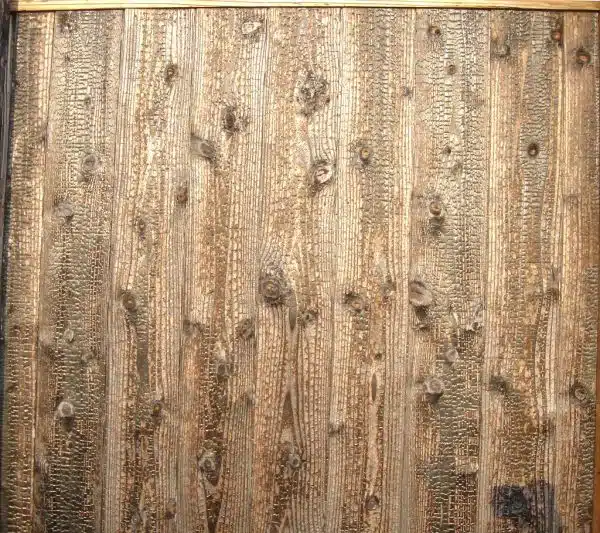




![How To Repair Rotted Wood 6 Texture : Altario Buick Estate Wagon : Rotting Faux Wood Paneling [1 of 2]](https://green-life.blog/wp-content/uploads/2023/05/z1CersK-gCjq-150x150.jpg.webp)

